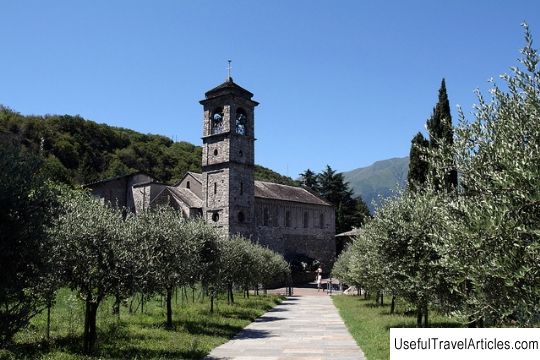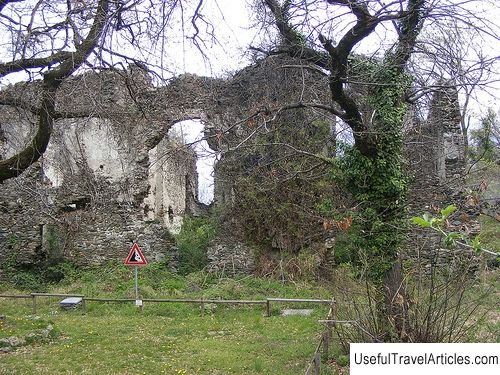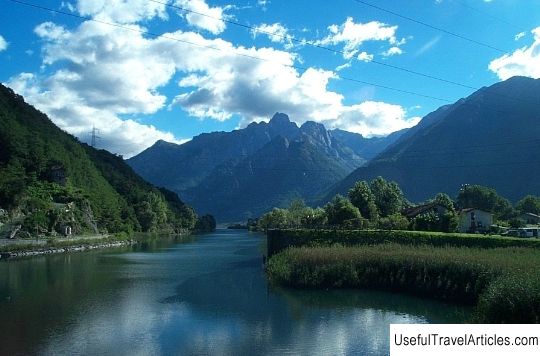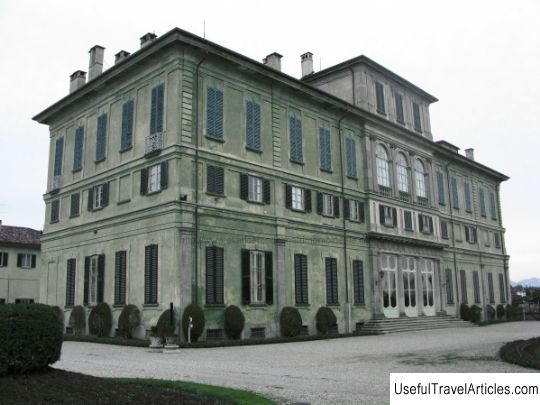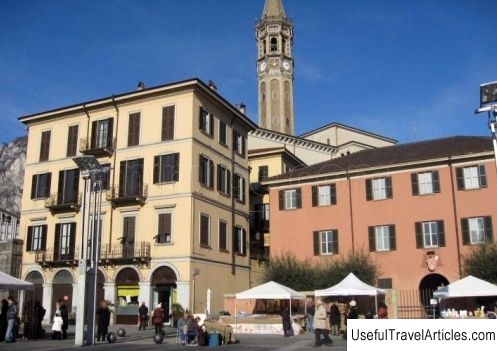Colico description and photos - Italy: Lake Como
Rating: 7,7/10 (3244 votes) 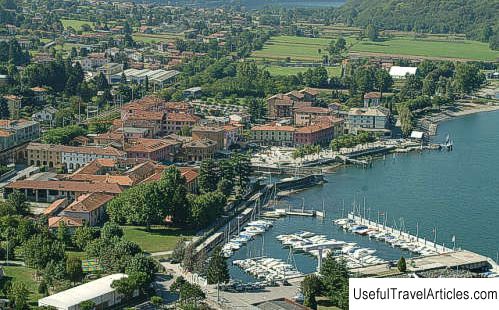
Colico description and photos - Italy: Lake Como. Detailed information about the attraction. Description, photographs and a map showing the nearest significant objects. The title in English is Colico. Photo and descriptionColico is the most important settlement in the northern part of Lake Como. The population of this town, located at the confluence of the Adda River into the lake, is about 7,200 people, and the area is 35.3 square kilometers. Colico is an important transport hub - from here you can get to Milan (by train or car) or to the cities of Como and Lecco (by ferries and boats). In addition, highways connect Colico with Milan, Chiavenna and Bolzano. It is in this city that the famous Abbey of Piona is located - one of the most romantic architectural monuments of Lombardy and one of the most beautiful monasteries in northern Italy. The abbey church was built in the 11th century, but was rebuilt more than once in the following centuries. The covered gallery with pointed arches dates from the 13th century, the bell tower was erected in the 18th century. Among the other attractions of Colico, the forts of Montecchio and Fuentes are worth highlighting. The first, Fort Montecchio, is the only fort in Italy left from the First World War. It was built in 1911-1914 to control the city streets of Spulga, Maloha and Stelvio in case the so-called Central Powers (German Empire, Austria-Hungary, Ottoman Empire and Bulgarian Empire) decided to violate Switzerland's neutrality and invade the territory of northern Italy. True, it turned out that the fort never took part in hostilities, even during the Second World War. It was later used as a warehouse for storing weapons. Today, visitors to Fort Montecchio can view its main attraction - the weaponry, which consists of four cannons. Fort Fuentes was built in 1603-1606 by Count Fuentes to protect the borders north of the Duchy of Milan. It consists of several levels and can accommodate up to 300 people. Its advantageous geographical location made it possible to control the territory of the entire plain below, which in the 17th century was called the Spanish Plain - Pian di Spagna. In 1796, by order of Napoleon, the fort was dismantled and abandoned. Today only ruins remain of it. Since Colico was once an important staging post on the main roads of the Apennine Peninsula, it has been heavily fortified. North of Fort Montecchio, you can still see two watchtowers that were built during the so-called Castello Colico period. It is worth noting also the towers of Fontanedo, built in the 14th century, and Curcio, now converted into a rural estate. Finally, in the town of Oljaska, stands the Mirabello castle, probably built in the 16th century. Of the religious buildings in Colico, it is worth noting the small church of San Rocco, originally dedicated to Saints Fabian and Sebastian. It stands outside the city on the slopes of Mount Legnone at an altitude of 500 meters. Also noteworthy are Villa Malpensata, with its facade facing the lake, and Villa Ozio, located on the Lungolario Polti promenade. In addition to historical and cultural attractions, Colico has an excellent beach with a soccer field, tennis courts, a surfing and kitesurfing school. Of the religious buildings in Colico, it is worth noting the small church of San Rocco, originally dedicated to Saints Fabian and Sebastian. It stands outside the city on the slopes of Mount Legnone at an altitude of 500 meters. Also noteworthy are Villa Malpensata with its lake-facing facade and Villa Ozio, located on the Lungolario Polti promenade.       We also recommend reading National Park Ordesa y Monte Perdido description and photos - Spain: Aragonese Pyrenees Topic: Colico description and photos - Italy: Lake Como. |
